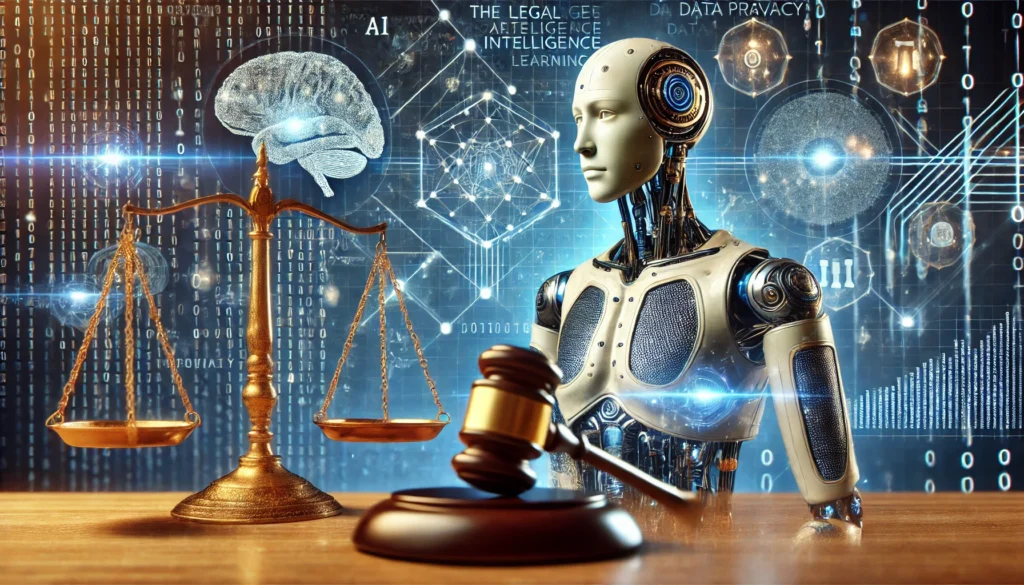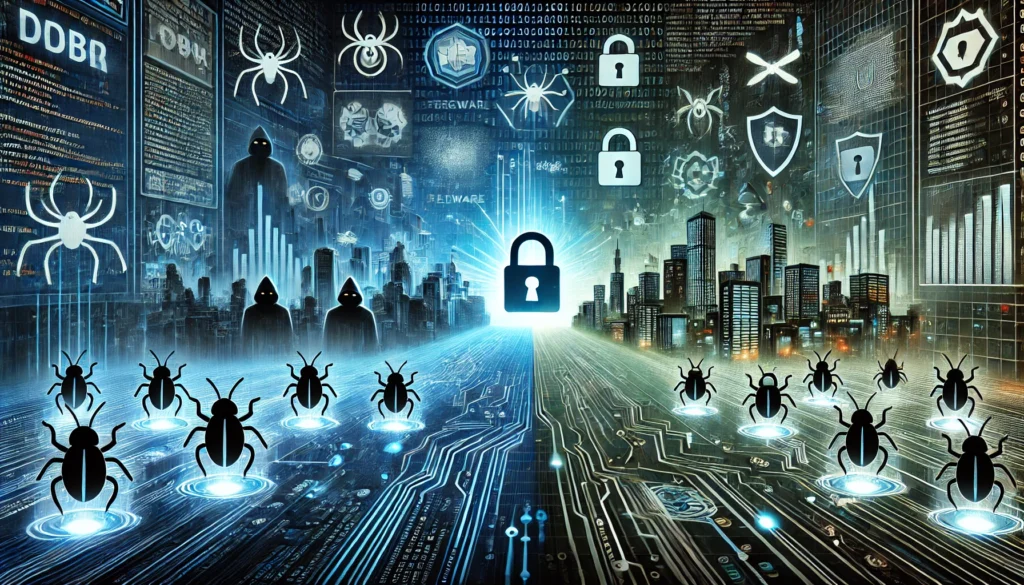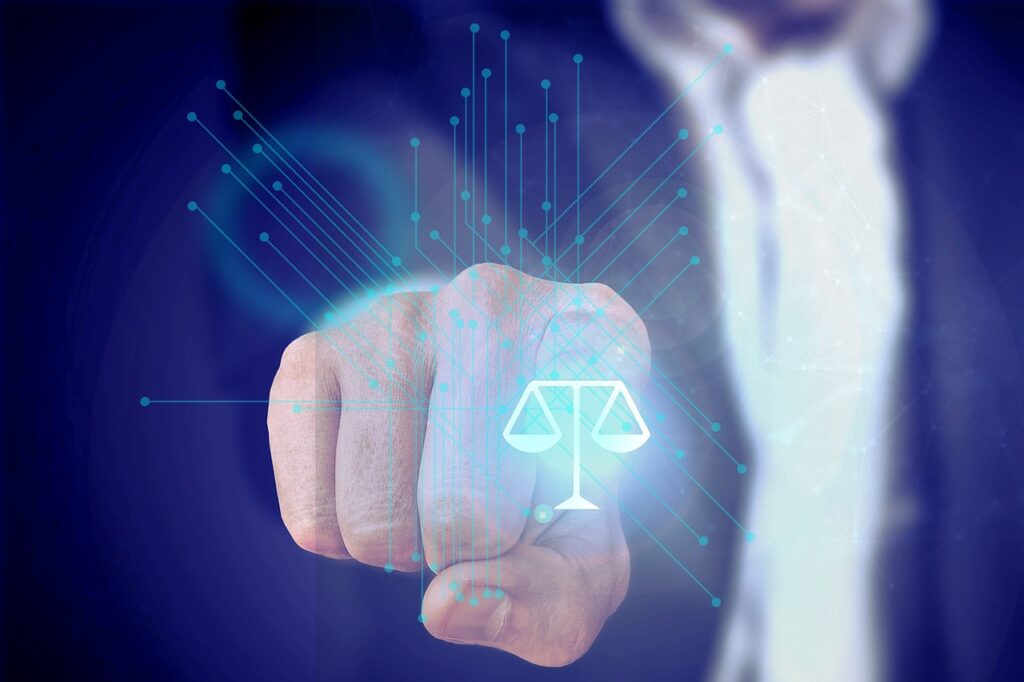Published on 20th February 2025
Authored By: Divyendu Lakwad
Dr. B.R. Ambedkar National Law University, Sonipat, Haryana
ABSTRACT
The rapid technological advancements and the exponential growth of internet users has provided various opportunities in advancing the human race as a whole. However, these benefits aren’t without their shortcomings. Due to the incessant and rapid upsurge of new technologies and inventions every day, the legal system of India continues to face several difficulties. This article aims to address effectiveness of existing legal framework, and difficulties faced by current cyber laws in India. Finally, it offers some possible adjustments and solutions that can aid in tackling the setbacks.
INTRODUCTION
Cybercrimes, also known as digital crimes, are illegal activities that revolves around the use or targeting of computers or networked devices. Cybercrimes are usually committed with aim of gaining monetary profits. However, these crimes are not limited to money and can be committed by individuals who have other agendas in mind that may have personal or political motive.[1]
Cybercrimes being incorporeal, aren’t hurdled by physical limitations. Cybercrime may come in various forms of illegal activities that are committed through digital means such as identity frauds, financial frauds, ransomware attacks, infringing copyrights and many more. Cybercriminals often exploit gaps in legal frameworks, necessitating adaptive legislation that seek to fill in these gaps ensuring privacy and safety of individuals against the dynamic and borderless nature of cybercrime.
THE RISE OF CYBERCRIME IN INDIA
India has been one of the largest internet hubs in the past decade, providing internet user base that catering to internet users that reach well above 800 million in numbers as of 2024.[2] However, the vast area provided by digital realm is accompanied by rise in the number of opportunities for criminal behaviour. According to a report in Economic Times, the Indian Cyber Crime Coordination Centre (I4C) saw over 740,000 reported cybercrimes in the first four months of 2024, leading to loss of over Rs. 1,750/- crore due to cyber frauds.[3]
Cybercrime pertaining to their dynamic nature have the ability to affect millions of people. Past notable incidents such as Aadhar Data Leak, as per the report by the Economic Times, saw personal data of 81.5 crore Indians on sale on dark web, this includes not only their Indian Citizen Aadhaar but also Passport records.[4] Incidents such as this have become a prime example of how well-established systems can be breached into and exploited, affecting millions and possibly even billions of individuals who remain unaware of such threats posed by this relatively new branch of crime.
EXISTING CYBERLAW FRAMEWORK IN INDIA
Cyberlaws have faced a number of challenges in their introduction pertaining to the rigid behaviour of law and the cybercrimes being relatively new in terms of legal spectrum. India’s primary legislation that seeks to address cybercrime is the Information Technology (IT) Act, 2000.[5]
Information Technology (IT) Act, 2000, was the first act made with specifically for the purpose of handling issues regarding cybercrimes. It has seen two major amendments seeking to address ever emerging threats poses by technological advancement. Information Technology Act, 2000 has 94 sections that collectively focus on establishing a framework for electronic governance.[6] Some of the key provisions of Information Technology (IT) Act, 2000 are:
- Section 43 of IT Act, 2000: Section 43 delivers protection against unauthorized access to computer system, data theft, and damage to networked devices.
- Section 66 of IT Act, 2000: This provision introduces the punishments one may be subjectable to when they engage in any behaviour given in Section 43.
- Section 67 of IT Act, 2000: Section 67 deals with punishments for sharing or publishing sexually explicit material in electronic form.
- Section 69 of IT Act, 2000: This section grants power to authorities to intercept, monitor or decrypt information given that these actions are in interest of the national security.
Information Technology Act, 2000, is accompanied by five other laws that help in regulating cybersecurity in India, namely, the Indian Penal Code of 1860 (IPC), now the Bharatiya Nyaya Sanhita (BNS), 2023, the Information Technology Rules (IT Rules), the Companies Act, 2013, the Cybersecurity Framework (NCFS), and the recent addition being Digital Personal Data Protection (DPDP) Act, 2023.
CHALLENGES IN CYBERCRIME LEGISLATION
India has been one of the largest hubs for internet users in the world in the past decade, this have massively helped in boosting the countries growth. However, it comes along with the issue of opening a number of opportunities for cybercriminals, opportunities that allow them to exploit and profit for a large user base wherein a huge proportion of individuals are vulnerable and unaware of possibilities of such attacks. To protect citizens from such threats, India’s legal framework has seen major developments especially in the form of introduction of laws specifically addressing the digital sphere. While significant feats have been achieved in developing a cyber-legal framework, several challenges still continue to hinder the efficient and effective regulation and introduction of the cyberlaws:
- Technological Advancements: Technology in the modern world keeps evolving at rapid pace which often tends to outstrip legislative processes. Emerging technologies such as Artificial Intelligence (AI) pose even more complex questions in the formation of laws. Alongside this, blockchain and Internet of Things (IoT) present a number of vulnerabilities that existing laws have a hard time addressing adequately.
- Jurisdiction: Cybercriminals aren’t restricted by physical hurdles; this means that cybercrime aren’t limited to a particular nation and can be committed at internation scale. This dynamic and incorporeal nature of cybercrime makes it difficult to determine jurisdiction and enforce laws effectively.
- Lack of Awareness: Many victims of cybercrime in India are often unaware of their vulnerable state in the digital realm, this provides cybercriminals a golden opportunity to exploit and attack them. And not only the victims remain vulnerable online, but also, they are sometimes unaware of their legal rights and do not know what are the steps they should take in case these rights have been infringed.
- Conflict Between Security and Privacy: Another significant challenge faced when it comes to cyberlaws is striking a balance between managing privacy of individuals whilst ensuring national security. For instance, Section 69 of the Information Technology Act, 2000, allows for surveillance to ensure national security. This provision has drawn criticism for having possibility of misuse and infringement of liberty of individuals.[7]
POSSIBLE SOLUTIONS FOR CHALLENGES FACED BY CYBERCRIME LEGISLATION
The challenges faced by technological advancements and cybercrimes are hurdles that continue to test India’s legal framework at all times. Though, they may appear to be imposing can be tackled with various methods which can be attained by evolution of India’s legal framework. Some of the key suggestions that can help in achieving this goal are:
- Periodical Legislative Updates: To serve as an answer to the problems of incessant evolution of technology, laws must be update on more frequent and periodical basis. This ensures that new vulnerabilities that may arise with the introduction of new technologies are readily reviewed and regulated.
- Cyber Awareness Campaigns: Campaigns can be initiated to educated citizens about cyberlaws and practices they can undertake to ensure their cybersecurity.
- International Collaboration: Another solution aims to address issue of jurisdiction is seeing that countries actively participate in global initiatives and introduce International Laws that regulate issues that may arise due to the fluid and borderless nature of cybercrimes.[8]
- Comprehensive Data Protection Laws: Introduction of laws that provide clear guidelines on data collection, storage and analysing can help by not only limiting the potential of misuse of cyberlaws but also by striking a balance between privacy of individuals and security of nation.
CONCLUSION
As India continues to evolve and progress in its journey towards becoming a digital superpower, ensuring the safety of its citizens and making sure they are not left vulnerable in the cyberspace is much more needed than ever before. Cyberlaws have been playing a crucial role in this, striving continuously towards efficient regulations. However, they should not only seek to address existing threats but also try to anticipate and cater to possible future challenges. A proactive and adaptive approach by means public awareness and rapid growth of laws is essential for safeguarding the citizens and India’s future as a whole. A well-established system that ensures cybersecurity at its best alongside with technological advancement ultimately is the paramount goal that guarantees unhindered exponential growth of India’s digital ecosystem whilst making sure it remains trustworthy for the citizens it is catered towards.
REFERENCES
[1] ‘What is cybercrime? How to protect yourself’ (Kaspersky, 6 November 2019) < https://www.kaspersky.com/resource-center/threats/what-is-cybercrime > accessed 7 January 2025
[2] Shivani Shinde, ‘India has over 800 MN internet users; most use tech for OTT services: Study’ Business Standard (Mumbai, 27 February 2024) < https://www.business-standard.com/technology/tech-news/india-has-over-800-mn-internet-users-most-use-tech-for-ott-services-study-124022700460_1.html > accessed 08 January 2025
[3] Rahul Tripathi, ‘Indians lost over ₹1,750 crore to cyber fraud in first four months of 2024’ The Economic Times (27 May 2024) < https://economictimes.indiatimes.com/news/india/indians-lost-over-1750-crore-to-cyber-fraud-in-first-four-months-of-2024/articleshow/110444616.cms?from=mdr > accessed 08 January 2025
[4] ‘Aadhaar data leak: Personal Data of 81.5 crore Indians on sale on dark web: Report’ The Economic Times (31 October 2023) < https://economictimes.indiatimes.com/tech/technology/aadhar-data-leak-personal-data-of-81-5-crore-indians-on-sale-on-dark-web-report/articleshow/104856898.cms > accessed: 09 January 2025
[5] ‘Cyber Law in India: Guardian of The Digital Realm’ (LexisNexis Blogs, 3 April 2024) < https://www.lexisnexis.in/blogs/cyber-law-in-india/ > accessed 9 January 2025
[6] Mayashree Acharya, ‘It Act 2000: Objectives, features, amendments, sections, offences and penalties’ (cleartax, 17 April 2024) < https://cleartax.in/s/it-act-2000 > accessed 09 January 2025
[7] Apar Gupta, ‘Supreme Court issues notice on IFF’s petition for surveillance reform #SaveOurPrivacy’ (Internet Freedom Foundation, 14 January 2019) < https://internetfreedom.in/supreme-court-issues-notice-on-iffs-petition-for-survelliance-reform-saveourprivacy /> accessed 10 January 2025
[8] Karnika Seth, ‘Evolving strategies for the enforcement of cyberlaws: Karnika Seth – Cyberlawyer & Expert’ (Karnika Seth – Cyberlawyer & Expert, 24 April 2014) < https://www.karnikaseth.com/evolving-strategies-for-the-enforcement-of-cyberlaws.htm l> accessed 10 January 2025




